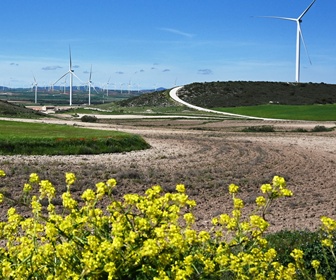Wind power emerged from 2019 as America’s top choice for new power after building 9.1GW, representing 39% of new utility-scale power additions. With these additions, operating wind power capacity in the U.S. now stands at over 105GW, enough to power 32 million American homes. In addition, wind energy is now the largest provider of renewable energy in the country, supplying over 7% of the nation’s electricity in 2019. The newly released Wind Powers America Annual Report 2019 reveals that U.S. wind energy supports a record 120,000 American jobs, 530 domestic factories, and $1.6 billion a year in revenue for states and communities that host wind farms.
Texas and Iowa led the country in wind power additions, with both states installing individual record amounts of wind power for a single year. South Dakota had the largest percentage growth in 2019, increasing its installed wind capacity by over 50 percent after installing 506 MW. In total, wind project developers delivered 55 projects in 19 states during 2019.
Having finished the past decade with record growth, the wind industry is poised for continued strong expansion in the coming years. Another 44GW of capacity is either under construction or in advanced stages of development. Those projects represent $62 billion in investment in the U.S. economy and enough additional power for 15 million American homes, once they’re built.
The COVID-19 pandemic is causing unprecedented challenges to the U.S. healthcare system, disruptions to daily life across the country, and deep uncertainty across the economy. Those challenges confront the U.S. wind energy industry as well. The industry remains focused on its primary objectives: ensuring the safety of the wind workforce and protecting American jobs and economic investment.
According to AWEA analysis, COVID-19 is putting an estimated 25 GW of wind projects at risk, representing $35 billion in investment. This includes the potential loss of over $8 billion to rural communities in the form of state and local tax payments and land-lease payments to private landowners, as well as the loss of over 35,000 jobs, including wind turbine technicians, construction workers, and factory workers. Like the benefits of wind development, these losses will be felt most strongly in rural communities.
According to AWEA analysis, COVID-19 is putting an estimated 25 GW of wind projects at risk, representing $35 billion in investment. This includes the potential loss of over $8 billion to rural communities in the form of state and local tax payments and land-lease payments to private landowners, as well as the loss of over 35,000 jobs, including wind turbine technicians, construction workers, and factory workers. Like the benefits of wind development, these losses will be felt most strongly in rural communities.








